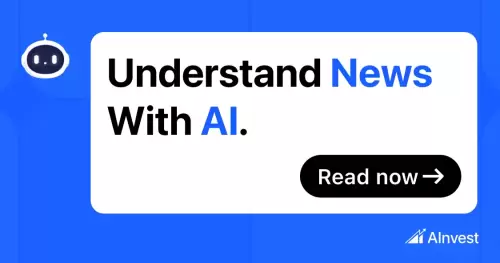 |
|
 |
|
 |
|
 |
|
 |
|
 |
|
 |
|
 |
|
 |
|
 |
|
 |
|
 |
|
 |
|
 |
|
 |
|
Cryptocurrency News Articles
OpenID Connect (OIDC): Why It Matters for Authentication and Identity Management
Jun 20, 2025 at 03:49 pm
Explore OpenID Connect (OIDC), a modern authentication method that simplifies logins, enhances security, and improves user experience across various applications.

Let's face it, login systems are everywhere. From ordering pizza to accessing office tools, every app asks you to 'Sign in with Google' or 'Log in with Microsoft'. OpenID Connect (OIDC) is the modern way for apps to authenticate users, building upon OAuth 2.0 to not only grant access but also verify user identity.
What is OpenID Connect (OIDC)?
In simple terms, OIDC is a modern way for apps to authenticate users by piggybacking on OAuth 2.0. While OAuth is all about granting access to stuff like calendars and photos, OIDC adds an identity layer on top. This means it can also confirm who you are, not just whether you have permission to do something.
Consider SSOJet, a product designed to connect apps with multiple identity providers (like Google, Azure AD, and Okta) using standards like SAML and OIDC. When a customer wants users to log in with their Google or Azure AD account, SSOJet uses OIDC behind the scenes.
Why Should You Care About OIDC?
OIDC makes logins faster, safer, and easier for both developers and users. No one wants to remember another password, and you don’t want to store passwords you don’t have to. With OIDC, you can offload that to trusted providers while still knowing exactly who’s using your app.
In a nutshell:
- It’s a standard: Based on OAuth 2.0, widely adopted.
- It’s simple: Easy to implement with existing libraries.
- It’s secure: Offloads authentication to trusted providers.
How the OIDC Login Flow Works
When you hit that 'Login with Google' button, here’s what happens: Your app (the Relying Party) delegates the password management to a trusted Identity Provider (IdP) like Google or Microsoft. The IdP handles the login and then tells your app who just signed in.
The OIDC Login Flow in Quick Steps:
- User clicks “Login.”
- App redirects the user to the IdP (e.g., Google).
- User logs in at the IdP.
- IdP redirects the user back to your app with a special code.
- Your app exchanges the code for an ID Token (and optionally, an Access Token).
- Your app validates the ID Token to confirm the user’s identity.
Key Endpoints You’ll Use:
- /authorize: Where the login flow starts.
- /token: Where you exchange the code for tokens.
- /userinfo: Where you can request more user details (like email, name, etc.).
OIDC standardizes this process, so you don’t have to build a new flow for every IdP.
Picking the Right Identity Provider (IdP)
The next thing you’ll need to figure out is which identity provider your app should use. If you’re building for yourself, it’s simple — maybe you just need Google or Microsoft. But if you’re building something where your customers might use different providers (Google, Azure AD, Okta, etc.), you need to be a bit smarter about it.
An IdP is basically the service that handles your users’ authentication. It’s the one saying, “Yep, this person is who they claim to be.”
OIDC Login Example — .NET Web App
Here’s how to set up a basic OIDC login in a .NET web app:
- Configure Your Application in your IdP’s developer console.
- Add NuGet Packages to your .NET project.
- Update Program.cs / Startup.cs with your IdP details.
- Add Login and Logout Endpoints to handle the redirects.
Run your app, visit /login, and you’ll get redirected to Google’s sign-in page. Log in, and your app now knows who you are — using OIDC.
Tokens in OIDC
When the IdP sends your app a response after a successful login, you’ll typically get:
- ID Token: A JWT that contains user information.
- Access Token: Used to access protected resources.
- Refresh Token: Used to get new Access Tokens without prompting the user to log in again.
Key parts to check in the ID Token:
- iss: Issuer (who issued the token).
- sub: Subject (the user’s unique ID).
- aud: Audience (who the token is intended for).
- exp: Expiration time (when the token expires).
Validating Tokens
Don’t just accept any token you get. Validate it. Here’s what to check before trusting any ID Token:
- Check the signature to ensure the token hasn’t been tampered with.
- Verify the issuer (iss) matches your IdP.
- Confirm the audience (aud) is your application.
- Ensure the token hasn’t expired (exp).
Where Should You Store Tokens?
- ID Tokens: In a secure, HttpOnly cookie (server-side).
- Access Tokens: In memory on the client-side (if needed for API calls).
- Refresh Tokens: Server-side only.
Handling Token Expiry
Tokens don’t live forever — and that’s a good thing. When an Access Token or ID Token expires:
- Redirect the user to the login page to reauthenticate.
- Use a Refresh Token to get a new Access Token (if you have one).
Wrapping Up
From understanding what OIDC is and how its login flow works, to picking your IdP, wiring it up in a .NET app, handling tokens safely, and managing sessions and logouts like a pro, you're now well-equipped to implement modern authentication in your applications.
Next move? Spin up your own test project, plug in Google as an IdP, and watch the magic happen. Once you get the basics down, you’ll be ready to connect Azure AD, Auth0, or any other OIDC-compliant provider you want.
Happy coding, and may your authentication flows always be secure and seamless!
Disclaimer:info@kdj.com
The information provided is not trading advice. kdj.com does not assume any responsibility for any investments made based on the information provided in this article. Cryptocurrencies are highly volatile and it is highly recommended that you invest with caution after thorough research!
If you believe that the content used on this website infringes your copyright, please contact us immediately (info@kdj.com) and we will delete it promptly.
-

-

-

- BlockchainFX ($BFX): The Crypto Presale Set to Explode (Visa Access and More!)
- Aug 06, 2025 at 12:00 am
- Forget meme coins! BlockchainFX ($BFX) offers real utility and daily rewards. This presale is your last chance to get in before the price explodes. Discover why BFX is dominating the crypto presale scene.
-

-

-

-

-

-



























































